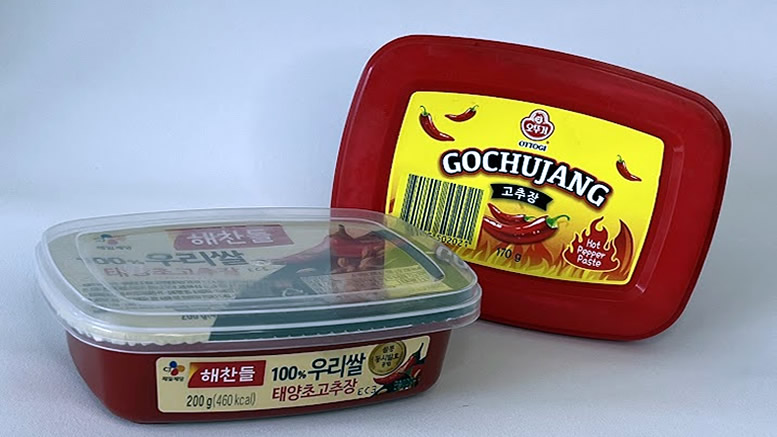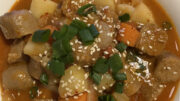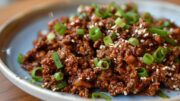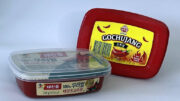Gochujang, a staple in Korean cuisine, is a rich, red fermented paste made from chili powder, glutinous rice, fermented soybeans, and salt. Its origins date back to the late 16th century, when chili peppers were first introduced to Korea from the Americas. Over centuries, gochujang has evolved and firmly rooted itself in Korean culinary traditions, becoming an essential condiment in various dishes.
Historically, gochujang was prepared at home and fermented in large earthenware jars called “onggi,” which were stored outdoors. This traditional method allowed the paste to develop its complex flavors over months or even years. The preparation and sharing of gochujang were often community activities, symbolizing familial and social bonds.
Gochujang is celebrated for its unique combination of spicy, sweet, and savory flavors, making it an indispensable ingredient in Korean cooking. It is a key component in famous dishes like bibimbap, tteokbokki, and various stews and marinades. Its versatility extends to being used as a base for sauces, soups, and even salad dressings, adding depth and a distinctive kick to any recipe.
Beyond its culinary uses, gochujang holds cultural significance in Korea. It is often featured in traditional rituals and festivals, symbolizing health, happiness, and prosperity. The meticulous process of making gochujang and its deep, robust flavor reflect the rich heritage and culinary artistry of Korean culture.
Storage and Use
When purchasing gochujang, you can find it in various forms, typically packaged in tubs or jars. High-quality gochujang should have a deep red color and a thick, smooth consistency. For the best flavor, look for gochujang that has been fermented naturally without additives.
To store gochujang, keep it in an airtight container in the refrigerator once opened. Properly stored, it can last for several months, allowing the flavors to further develop over time. Its robust and concentrated flavor means that a little goes a long way in recipes.
Culinary Pairings
Gochujang’s bold flavor pairs exceptionally well with a wide range of ingredients and dishes. It complements meats such as beef, pork, and chicken, adding a spicy kick to marinades and BBQ dishes. In Korean cuisine, it is often used in conjunction with ingredients like garlic, ginger, sesame oil, and soy sauce, creating a harmonious balance of flavors.
It also enhances the taste of various vegetables, particularly in stir-fries and pickled dishes like kimchi. Gochujang can be incorporated into dipping sauces for dumplings or used as a condiment to accompany rice and noodle dishes. Its versatility inspires home cooks to experiment with it in both traditional and contemporary recipes.
Popular Korean restaurants like Bibigo and BCD Tofu House showcase the wide-ranging uses of gochujang in their menus, offering dishes that highlight its unique flavor profile. From spicy stews to savory pancakes, these establishments provide inspiration for incorporating gochujang into your own culinary creations.
Gochujang paste is readily available in the Asian section of most supermarkets, making it easy for home cooks to explore and enjoy the vibrant flavors of Korean cuisine.





